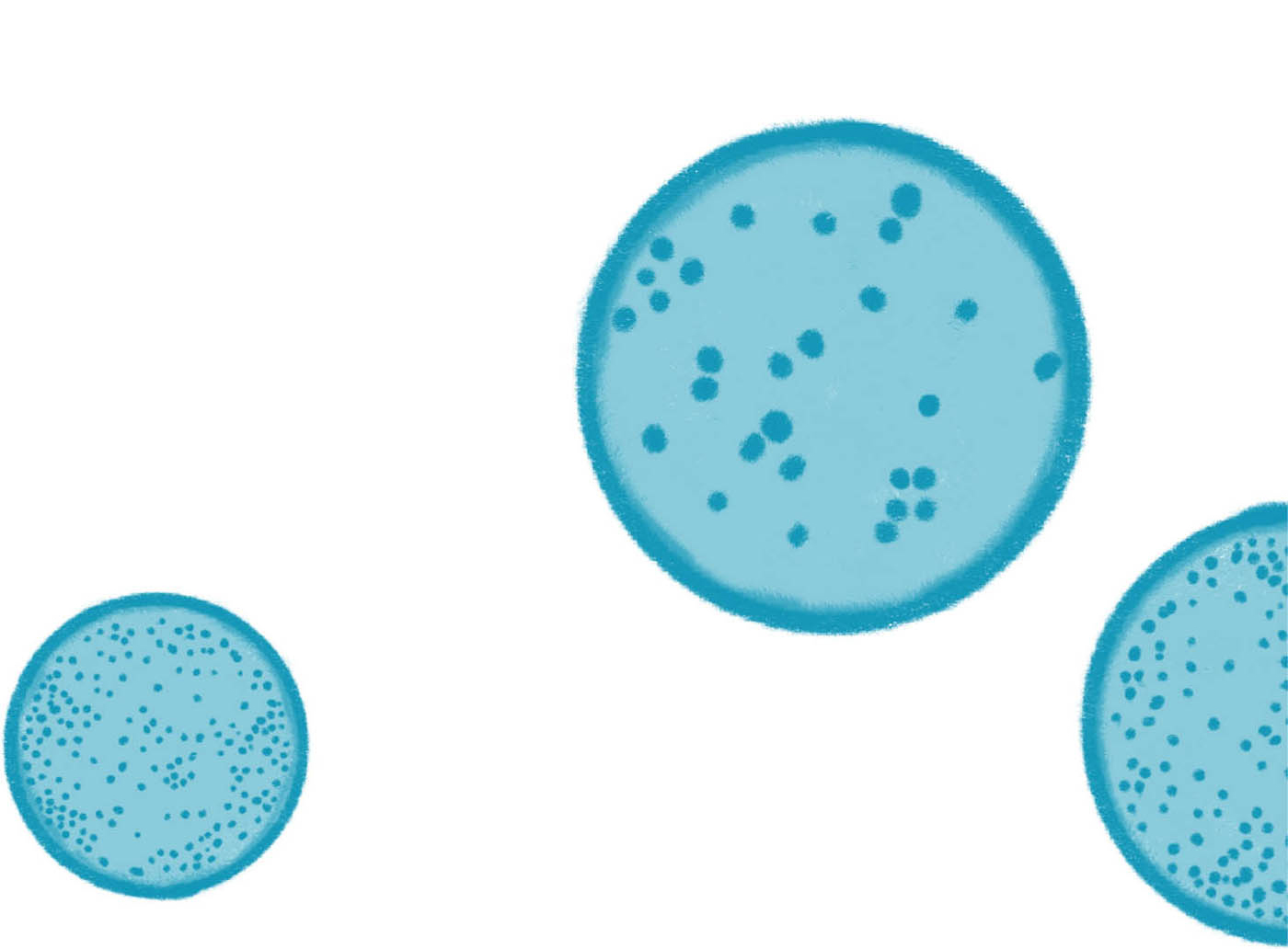 LAB 20
LAB 20 
Esther Lederberg b. 1922

THE GREAT DEPRESSION
Esther Miriam Zimmer was born in the Bronx of New York in 1922. She was seven years old when the Great Depression struck. Esther recalled being hungry as a child and often having just a piece of bread topped with juice squeezed from a tomato for lunch. She was very close to her grandfather, who taught her to speak Hebrew.
STRUGGLING SCIENTIST
When she was sixteen, Esther graduated from high school and won a scholarship to study at Hunter College, City University of New York. She loved literature, music, and French, but decided to study biochemistry. After college, she moved to California to pursue a master’s degree in genetics at Stanford. To pay rent and buy food, she worked as a laboratory assistant and did laundry for her landlady.
MADISON, WISCONSIN
In 1946, Esther married a scientist named Joshua Lederberg and took his last name. They moved to Madison, Wisconsin where Joshua had been offered a job as a professor. Despite her master’s degree and doctorate research at Stanford, Esther could only find work as Joshua’s unpaid laboratory assistant. At the University of Wisconsin, she and Joshua did groundbreaking research on bacteria and in 1959 they returned to Stanford, where Joshua was made a tenured professor. Even with a Ph.D. and several major discoveries, Esther worked for fifteen years as a senior scientist before she was made an adjunct professor and was named the head of Stanford’s Plasmid Reference Center.
A MAJOR DISCOVERY
Around 1950, as she finished her doctorate degree, Esther discovered that the E. coli bacteria she was studying had been infected by a type of virus called a bacteriophage. She named her discovery lambda phage and her research revealed that it was special because it could insert itself into the DNA of the host bacteria. While studying lambda phage, she also found a DNA sequence in bacteria that allows them to exchange DNA with other bacteria.
REPLICA PLATING
Dr. Esther Lederberg created an important laboratory technique called replica plating, which used a velvet stamp pad to transfer bacteria colonies from one plate to another in the exact same pattern. Using this method, scientists can easily find bacteria that have undergone spontaneous DNA mutations which allow them to grow on plates containing antibiotics.
IN TODAY’S WORLD
Lambda phage is an important tool for molecular biologists, and is used in research labs around the world every day.

Esther Lederberg was famous for discovering a virus called lambda phage, but she also invented an important laboratory technique called replica plating. In this lab, you can do a project simulating how replica plates are stamped, using potatoes and cotton swabs. 1 Slice a potato into several round pieces around 1 inch (2.5 cm) thick. 2 Cut the tips off of cotton swabs so that only a very short piece of the stick is left. 3 Use a toothpick or skewer to poke holes in a random pattern in one of the potato slices. Fig. 1. Fig. 1. Poke holes in potato slices. 4 Insert cotton swab fragments into the holes to represent bacterial colonies growing on agar plates. (See Lab 10.) Try to make them all level, so they will stamp evenly. Fig. 2. Fig. 2. Insert cotton swabs. 5 Repeat steps 2 through 4 to make a few more model agar plates. The pattern of colonies should be different on each plate. Fig. 3. Fig. 3. Make several model petri plates. 6 Trace potato slices onto paper to form several “plates” on the paper. 7 Paint the cotton swabs on each plate. Fig. 4. Fig. 4. Paint the swabs. 8 Dry off the remaining potato slices. Use one of them as a pad to pick up paint from the painted cotton swabs on one of your plates. Fig. 5. Fig. 5. Use a dry potato slice to pick up the paint from one of your model agar plates. 9 Stamp the paint onto another potato slice or onto the circles you drew on the paper to see how you could replicate the pattern on a new petri plate. Fig. 6. Fig. 6. Make a replica plate by stamping the pattern onto another potato slice or onto paper. 10 If using potato slices to lift the pattern isn’t working well, stamp the colonies directly onto the paper circles. 11 Repeat with the other plates. CREATIVE ENRICHMENT Grow yeast on an agar plate (Lab 10). Mix yeast and water together and use a clean toothpick to apply it to a plate in a pattern of dots. When the yeast has grown for a few days, use a jar with a paper towel or velvet over one end to try to stamp the yeast pattern onto a new agar media plate. THE BIOLOGY BEHIND THE FUN E. coli is a species of bacteria found in the lower digestive tracts of mammals, including humans. In research labs, these bacteria are essential tools for biotechnology. Not only are E. coli inexpensive to grow, but they divide rapidly. Scientists regularly use them for recombinant DNA technology because it is simple to add pieces of DNA from other organisms to E.coli and use the bacteria to produce foreign proteins. When individual E. coli are spread on agar medium (see Lab 10), they divide quickly to form individual spots, called colonies, which are visible to the human eye. Each colony contains millions of genetically identical bacteria. Dr. Esther Lederberg and her husband Joshua Lederberg used Esther’s replica plating technique to show that DNA mutations (changes) occur frequently and randomly in E. coli. By stamping identical colonies from one agar plate to another, they were able to see that certain bacterial colonies had developed mutations that gave them antibiotic resistance whether they were grown on plates containing antibiotics or grown on antibiotic-free plates. This demonstrated that the DNA mutations were random and not caused by growth on antibiotics.LAMBDA PHAGE/REPLICA PLATING
MATERIALS
SAFETY TIPS AND HINTS
PROTOCOL






